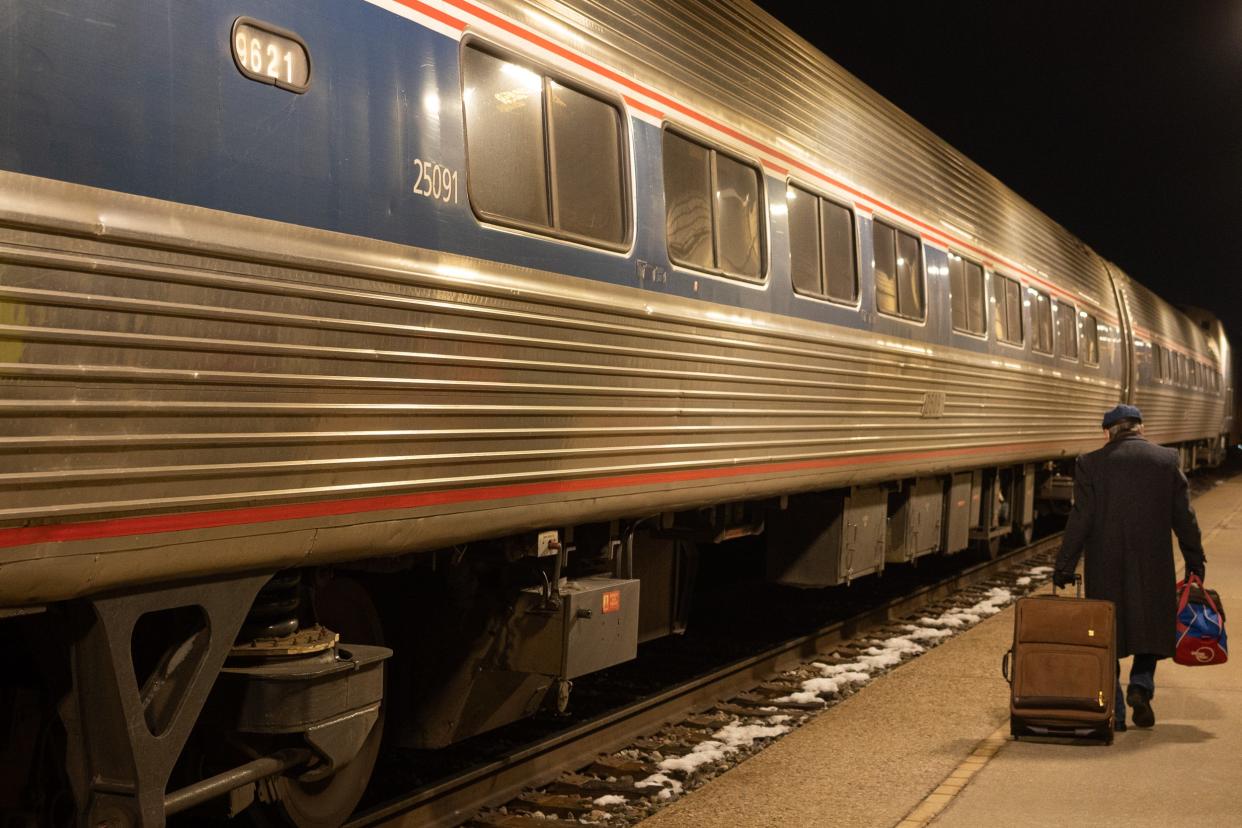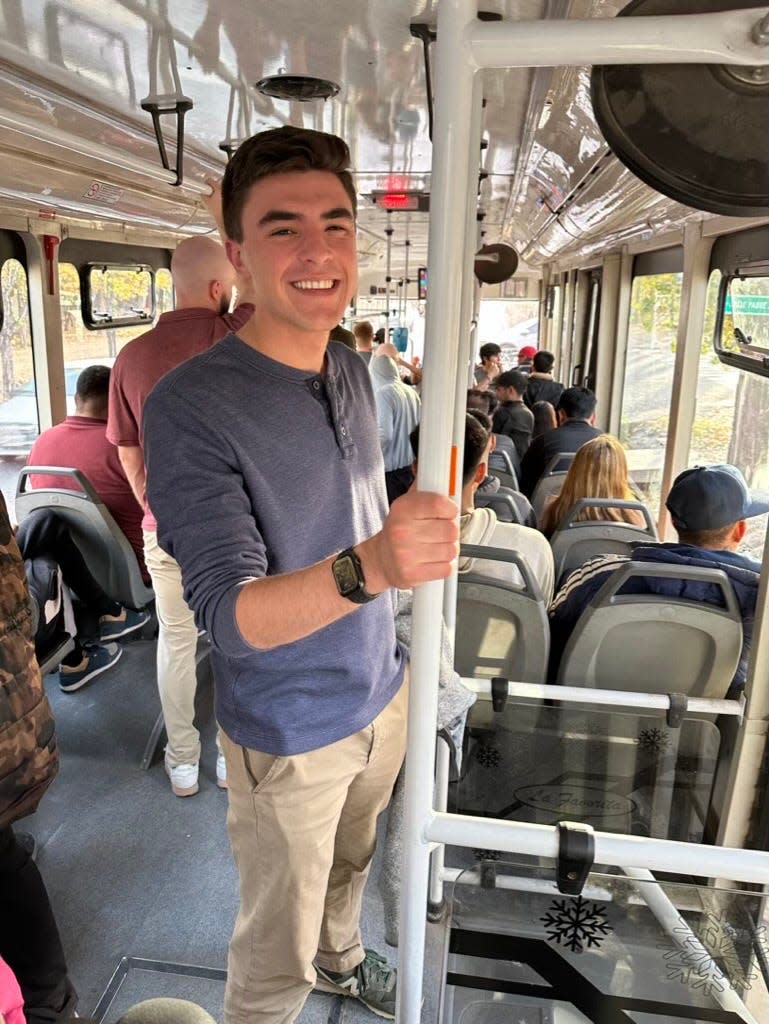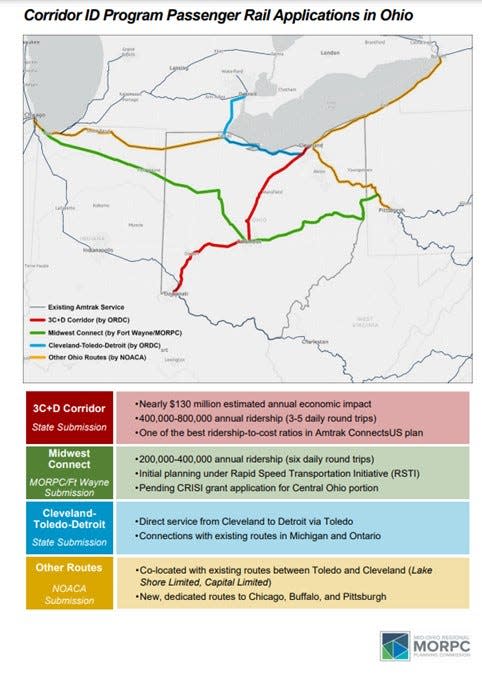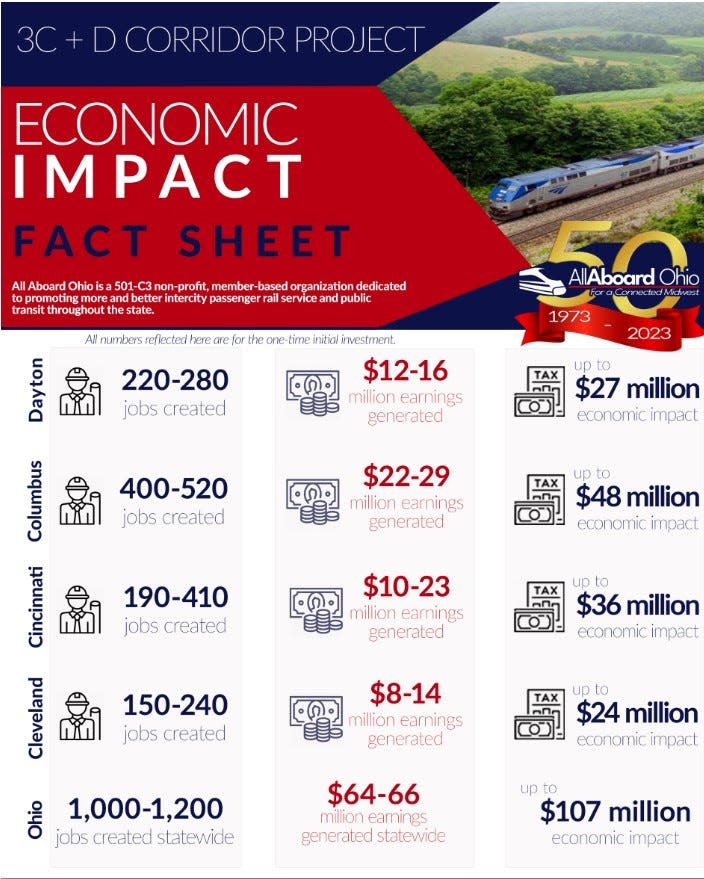Amtrak in Ohio: Backers hope where there's a will, there's a railway

Mitch Radakovich's car is older than he is.
But that doesn't faze the 24-year-old Cincinnati native, who travels by foot and bus between his home in Over-the-Rhine, his office downtown and wherever else he wants to go in Greater Cincinnati.
"I really only live a 'car-lite' life," Radakovich said. "To go completely car-free is really exciting to me."
Fueling his excitement, at present, are plans to expand Amtrak passenger service across Ohio.
Those efforts took big steps forward late last year, with four Ohio-centered expansion proposals winning federal dollars.
And while new Amtrak service is still years away, the four projects are now guaranteed additional federal funding for planning and, absent missteps, construction.
Radakovich will join fellow volunteers of a rail advocacy group called All Aboard Ohio as they promote passenger train possibilities during the Cincinnati stop of their Whistle Stop Tour.

Where are Whistle Stops on the tour?
All Aboard Ohio, one of more than nearly 200 individuals and groups publicly supporting the four Ohio proposals, will review the options and next steps during an event downtown at 1 p.m. on Wednesday. Its presentation is open to the public, with limited space still available.
The group opened its Whistle Stop Tour in Dayton last week, with upcoming presentations planned for Columbus, Cleveland, Toledo and Crestline, Ohio.
"This is something I want for Ohio," said Erin Rosiello, the group's chair. "This is something everyone should want for Ohio."

Where would new passenger trains travel?
Passenger train travel got a big boost late last year from the U.S. Department of Transportation.
That happened Dec. 8 when the department's Federal Railroad Administration announced 69 grants of $500,000 each to governments and other groups looking to establish or expand routes.
The four Ohio proposals were among them:
The Cincinnati-Columbus-Cleveland-Dayton corridor – known as 3C+D – would connect Ohio’s four largest metropolitan areas, home to about 57% of the state’s 11.8 million residents. With three to five daily round trips, between 400,000 and 800,000 people would use this line a year, according to the Mid-Ohio Regional Planning Commission.
The Midwest Connect line would connect Pittsburgh to Chicago, through Columbus and Fort Wayne, Indiana. With six daily round trips, 200,000 to 400,000 riders would use this route a year, the Mid-Ohio Regional Planning group said.
New passenger train travel from Cleveland to Detroit, passing through Toledo, would have an annual economic impact of $100 million, according to Amtrak's Connect US Corridor Vision report of 2020.
The Cardinal, Amtrak’s existing train from New York to Chicago with a stop at Cincinnati’s Union Terminal, would expand from three to seven days a week.
After they spend the first grant, backers of the projects will get more federal money to look at key logistics: which trains and tracks to use, how fast and often trains will run, and what passengers will pay for tickets.
"Those are the important questions," said Mark Policinski, CEO of the Ohio-Kentucky-Indiana Regional Council of Governments. "If those aren't answered satisfactorily, there is no next phase."
Where does Amtrak operate in Ohio now?
Amtrak passenger trains currently stop in six Ohio cities.
The Capitol Limited, a daily 764-mile line from Washington, D.C.., to Chicago, hits five of them in the northern part of the state – Alliance, Cleveland, Elyria, Sandusky and Toledo. The Capitol, launched in 1981, makes 16 stops on each 18-hour one-way trip. The Ohio stops come in the middle of the night – Cleveland at close to 3 a.m. while heading west and close to 2 a.m. returning east.
The Cardinal, a 1,146-mile train from New York to Chicago, hits only Cincinnati in Ohio, arriving around 1:30 a.m. while westbound and about 3:30 a.m. while eastbound. The line, launched in 1977, travels three times a week, making 32 stops on each leg of 26 1/2-plus hours.
Capitol ridership was about 126,000 for the year ended Sept. 30, down from pre-COVID traffic of close to 210,000 a year. About 83,000 people rode the Cardinal in the last fiscal year, down from 2019 ridership of 109,000.
Central Ohio, meanwhile, has been without passenger trains for decades, with Columbus’ last service ending in 1979. That makes it the largest city east of the Mississippi River without passenger rail, said William Murdoch, executive director of Mid-Ohio Regional Planning Commission.
Amtrak supports expansion in the state, with plans to tie into some 5,000 miles of existing Ohio tracks. "They are thinking like a business," Murdoch said.
What are the obstacles to Amtrak expansion?
To move forward, however, Amtrak will need to work with Norfolk Southern and CSX Transportation, the freight lines that operate in Ohio, to win track-sharing agreements that keep passenger service on schedule. "On-time performance is imperative," said Joseph Schwieterman, a transportation expert and professor at Chicago's DePaul University.
Amtrak will also need stations along the way. It could use Union Terminal in Cincinnati and Cleveland's Lakefront Station site for the 3C+D line – both are included in its 2020 plan – but would need space in Dayton, Columbus and other cities along the route.

Ohio needs more passenger rail to expand its economy and jobs, supporters believe. More train service would allow Ohioans to live in one city and more easily work in another.
Trains will also take cars off roads, reducing congestion and pollution; and make across-state travel easier for people who don't drive for financial, health or other reasons.
The 3C+D project alone would have a statewide economic impact of $47 million a year, according to a November study conducted for All Aboard Ohio. Amtrak, in its 2020 study, put the potential statewide impact of 3C+D service at close to $130 million a year.
When does All Aboard Ohio meet in Cincinnati?
When Radakovich took over as director of the southwest chapter of All Aboard Ohio last summer, three people came to his first meeting. In December, more than 30 showed up.
They'll need patience as they wait for Amtrak to expand. The planning alone will take five or six years.
"Sometimes things take time, but that's no reason not to plan for the future," said Radakovich, a data scientist at Procter & Gamble Co.
As they wait for plans to play out, All Aboard members talk about such issues as how to improve current local Amtrak service and bus travel on Greyhound.
Next week, they'll take up more close-to-home matters with guest Cincinnati City Council member Mark Jeffreys. The meeting is at 6 p.m. Jan. 24 at the Walnut Hills Public Library, 2533 Kemper Lane, and open to all.
This article originally appeared on Cincinnati Enquirer: Where does Amtrak want to expand in Ohio?
